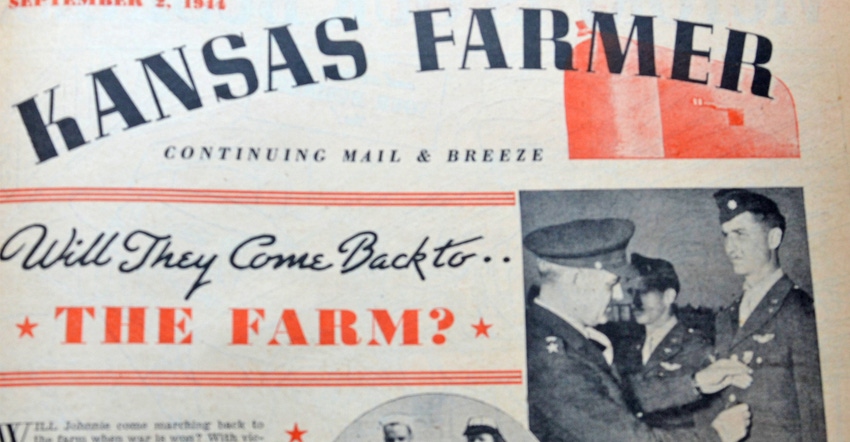July 29, 2019

The end of World War II was in sight by the fall of 1944, 75 years ago, and a big question loomed: What kind of opportunity would there be for those thousands of returning servicemen to come home to farms in Kansas and across the country?
Farmer advisory committees were formed in every county of the state to work with returning soldiers who wanted to farm to help them figure out in advance how many prospective farmers there were and how much land might be available to them, and at what price.
There was general agreement that the government had a responsibility to help returning servicemen find their place in the civilian economy, but widespread disagreement about just what that help would look like.
There were proposals to give servicemen first chance at any government-owned land put back in production, and to provide long-term credit with low interest rates.
55 years ago
A new winter barley adapted to south-central and southwest Kansas was approved by the Kansas Experiment Station in the fall of 1964. The new barley, called Will, was developed in Oklahoma from a cross between Rogers and Kearney.
Advantages of the new variety were high yield potential and resistance to loose smut, greenbugs and mildew. It also had stiffer straw than most winter barley varieties available at the time in Kansas.
35 years ago
Wheat as a feed grain for cattle was seen as an increasing trend in the fall of 1984, particularly when cattle feeders could buy wheat for a lot less money than corn.
Jerry Bohn, who was then the manager of Pratt Feeders, said he fed an increasing amount of wheat during the summer of 1984 and had good results. He said wheat routinely had 2% to 3% higher protein than corn or sorghum, providing savings from the use of less protein supplement.
20 years ago
USDA agreed back in 1999 that there was enough evidence that climate change was occurring to warrant worldwide action. That position supported the Kyoto Protocol, an agreement reached in a 1997 meeting of industrialized nations in Kyoto, Japan. The treaty bound participating nations to reduce greenhouse gas emissions for the period of 2008 to 2012.
Goerzen is executive director of the Old Cowtown Museum in Wichita.
About the Author(s)
You May Also Like




